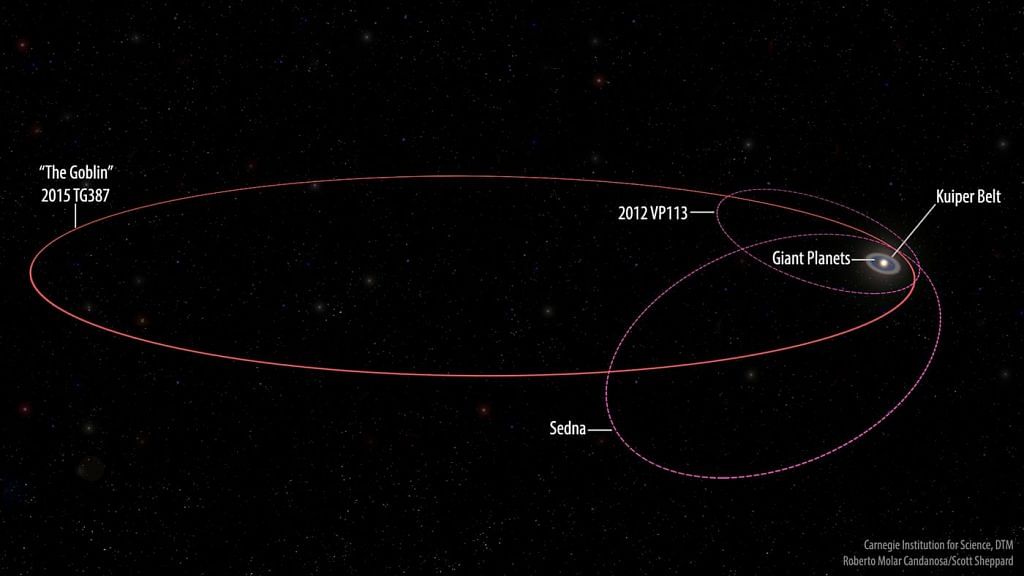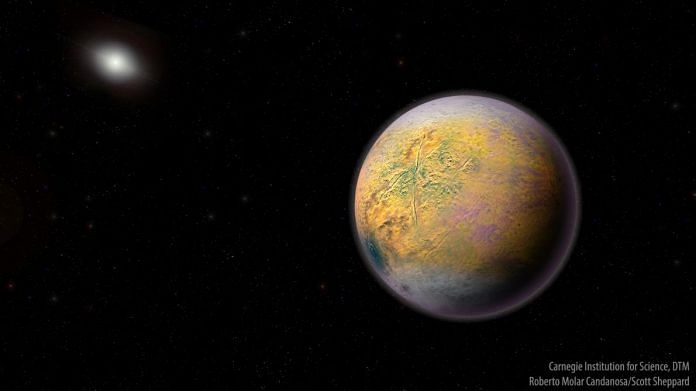A ‘tiny, cold world’ has been discovered in a mysterious disc-shaped region far beyond Neptune.
Bengaluru: Beyond the orbit of Neptune, far into the icy, cluttered world of the Oort Cloud where most comets originate, astronomers have discovered yet another body worth talking about.
Officially called ‘2015 TG387’ and nicknamed ‘The Goblin’, this possibly spherical body orbits the sun at a distance 80 times the Earth’s and is classified as a ‘minor planet’.
A minor planet doesn’t mean a small planet; it’s anything that’s not a planet or a comet. The discovery is significant because it could potentially be another point of support for the existence of a large, massive ‘Planet X’ in the depths of our solar system.
The icy Goblin zips around the sun in a highly elliptical orbit that takes 40,000 years to complete, coming as close as three times the distance between the Sun and Neptune (approx. 4.5 billion km), and going as far as 2,000 times that distance.
Also read: Liquid water on Mars is no surprise but here’s why it makes the planet tougher to explore
It is estimated to be just 300 km across, and is too faint to observe with the naked eye or amateur telescopes.
Although The Goblin was first observed in 2015, it was studied for three years and astronomers at Carnegie Institution for Science published their findings Tuesday.
The Goblin originates in the Inner Oort Cloud, a disc-shaped region far beyond our eighth planet. It is so mysterious that even though we know it contains millions of icy objects, we have managed to identify and track only three.
In the far reaches
The paper describes the minor planet as a sednoid, bodies that have an orbit where the closest approach to the Sun is over 50 times the distance between the Earth and the Sun, and the semi-major axis much beyond 150 times the distance. The first discovered sednoid was the minor planet Sedna.
Along with other minor planets like 2012 VP113 (‘Biden’), sednoids show a distinctive characteristic of having been disrupted from their regular orbit by a larger body.
This evidence is called a gravitational signature: Even though a massive body with powerful gravity cannot be seen directly, its gravitational effects can be observed as it goes around the Sun, disturbing other small objects.
It is proposed that sednoids orbit on a different plane than our eight major planets and in haphazard directions, but come close to each other at their closest approach to the Sun because of the hypothesised ‘Planet Nine’, which, if discovered, could be larger and more massive than the Earth.

Planet Nine may or may not be Planet X; the two planets have been proposed by competing groups of scientists.
But the existence of a planet so far beyond Neptune can only be confirmed when it is observed directly. Gravitational signatures do play a crucial role, but observational bias is an important factor to keep in check.
In case of Planet Nine/X, bias comes in the form of observing bodies with an unusual orbit that stand out precisely because they have anomalous orbits while the ones with normal orbits haven’t been spotted yet.
Also read: When NASA probe kisses the Sun, a star will spill long-held secrets
But whether we move closer or not towards discovering another planet, each icy discovery from the outer reaches of our solar system provides us more information on the formation of the Sun and the planets, and on our own neighbourhood.



